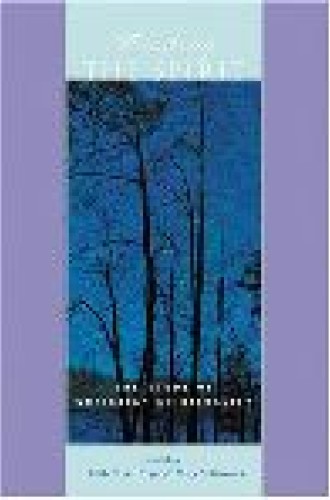Minding the Spirit
The spiritual life has often been seen as the concern of ordinary saints and well outside the purview of scholars. Indeed, in the 14th century Richard Rolle lamented, “Alas, the shame! That a little old lady could be more experienced in love of God (and less experienced in the pleasure of the world!) than a theologian, whose study is empty because he studies for the sake of vanity—that he may learn and appear glorious—and so he may acquire payments and dignities!” Those who know the 14th century will know that the hermit of Hampole wasn’t entirely fair to the scholars of his day, and such a judgment, though often articulated, does not treat the academy fairly today either. As a matter of fact, the surge of interest in spirituality has penetrated deeply enough into the academic world to give birth to a new discipline, evidenced by the 1991 creation of the Society for the Study of Christian Spirituality.
Ably edited by Elizabeth A. Dreyer, professor of religious studies at Fairfield University in Fairfield, Connecticut, and Mark S. Burrows, professor of the history of Christianity at Andover Newton Theological School in Newton Centre, Massachusetts, Minding the Spirit is the fruit of ten years of reflection and discussion in the SSCS concerning what Christian spirituality is and how best to teach it both as a discipline in the humanities and as a part of professional preparation for ministry. All of the essays have been published in the society’s Christian Spirituality Bulletin or in its recently launched journal, Spiritus. The editors distinguish Christian spirituality from spirituality in general, saying that the former “involves conscious discipleship, opening oneself to grace in the generosity of the Creator, through the love of God, by the grace of Jesus Christ, and in the power of the Spirit.”
Dreyer and Burrows have divided these searching and insightful articles into five sections: spirituality as an academic discipline, balancing theory and practice in teaching a subject with a strong experiential element, historical and theological perspectives for interpreting the tradition, spirituality and healing, and the relationship between spirituality and aesthetics. Each is introduced by a careful digest of the articles within. The depth of the essays may not permit the editors to reach as wide a readership as they hope, but this volume merits study by all persons who have a serious interest in spirituality and who try to guide others in the study of it.
In the opening section Sandra M. Schneiders, Bernard McGinn and Walter H. Principe lay the groundwork for the volume with something of a debate about how best to deal with spirituality as an academic discipline. In her initial essay Schneiders writes of two approaches to the study of spirituality—theological (“from above”) and anthropological (“from below”). McGinn, the consummate historian, suggests that we add a third approach, historical-contextual, and he finds support for this suggestion in Principe’s own distinction between three levels of the study of spirituality. In a second paper Schneiders accepts McGinn’s proposal in part and responds with an offer of a “hermeneutical” approach.
Elizabeth Liebert, a pastoral theologian who teaches at San Francisco Theological Seminary and the Graduate Theological Union, takes up the very important question of practice in the study of spirituality in an academic setting, concluding that practice is appropriate for academic as well as professional study because spirituality is by nature experiential. Next, Mark McIntosh observes that theology has not cultivated a communion with spirituality as it has with philosophy, hermeneutics, sociology and psychology. He proposes that if theologians were to enter into conversation with scholars of spirituality about Christology, they might produce “a mystically informed theology,” such as the Cappadocian fathers crafted in the fourth century CE and perhaps as Orthodox theologians pursue today.
In the fourth part of the book Jon Sobrino movingly depicts the spirituality of Archbishop Oscar Romero, who saw spirituality incarnated in the Salvadoran people’s struggle for justice and human rights. Basing his spirituality on the life of Jesus, Sobrino observes, Romero was unafraid to be the people’s advocate. If you think academics can’t relate spirituality to life, that perception may be challenged by the next essay, E. Ann Matter’s account of her pilgrimages to Lourdes as she battled cancer. “At Lourdes,” she says, “I found something that I really needed and that I have replenished by yearly visits since, both in groups and as a solitary pilgrim.”
In the final section Wendy Wright examines the role of devotion to the sacred heart of Jesus in shaping Roman Catholic piety in 17th-century France. Devotees focused on Jesus’ body as a way of achieving a mystical “exchange of hearts” with him. Though this might seem bizarre in a left-brain culture such as ours, Wright argues that the custom could teach us something about “contemplative seeing.”
Minding the Spirit is a rich resource for the study of spirituality. It raises the important questions with which serious students of the discipline must wrestle and points in the direction we would do well to go if we want to make the most of the life of the Spirit in today’s world.





